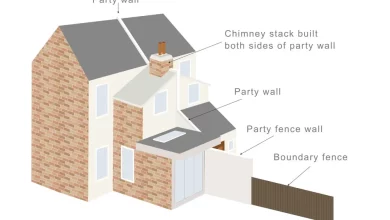A Beginner’s Guide to Video Editing Terminologies

The major function of any video editor is to alter, trim and compile separate clips into a comprehensive, final structure. Interestingly, video editing is mostly about utilizing 80% of the time in post-production – that’s where the editors get to showcase most of their skills and expertise. However, the other aspects of video editing are equally important as well, like the color, audio and contrast categories, etc.
Although we have tons of video editing apps and software systems available on the internet, still each one of them has its own unique features and specifications that make it stand out from others. If you wish to get a more precise idea about the pros and cons of each editor, then feel free to reach out to your favorite designing websites. It will help you to decide which app suits you the best.
However, before you begin your research, just ensure having a fast, and high-coverage internet connection like CenturyLink internet, so that your websites do not take excessive time to load.
For your convenience, here we have come up with the most important post-production terms you need to be familiar with, as a beginner. Below are our top picks – let’s get started!
Video Terminologies
- Frame Rates: Generally, the frame rates are defined as the number of frames per second to create motion in the video. For example, for a typical film-style video, you are probably going to need 24 frames per second to achieve a perfect look. Whereas, for slow-motion footage, you will need about sixty frames per second to give a smooth, and precise clip image.
- Video Resolution: Video resolution can be referred to the number of details in your videos – it is determined by the number of pixels held in each frame. For instance, typical examples of video resolution include: 1280 x 720 pixels, 1920 x 1080 pixels, or 2560 x 1440 pixels, etc.
- Aspect Ratio: It is the relation between the width and height of the images or screen like 4:3, 16:9, or 2:35:1, etc.
Common Color Terminologies
- White Balance: It determines the coolness, warmth, or color vibrancy in your images.
- Color Grading: Color grading is used to alter the color aspects of the clip images. It consists of various categories like sharpness, contrast, blankness depth, color overlays, white balancing, saturation, etc.
- Color Correction: It is the process of adjusting saturation/color issues and creating footage looks in a natural-looking manner. In other words, you can define it as the procedure of repairing the original image colors to give a cleaner and more realistic touch.
Frequently-Used Video Editing Terminologies
The above-mentioned terminologies reflected more on the technical side of the video editing, however, if you have understood those terms well, then you are probably ready to dive into the other ins and outs of video editing like:
- Montages: Montage can be defined as the order/sequence of different shots that are edited together to showcase an idea. Typically, the video editor adds more visual details to the images and occupies lesser screen space to keep the content flow easily accessible to the viewers.
- Visual Effects: VFX or Visual Effects help to complement scenes by adding the missing aspects or eliminating unwanted content to create perfect scenes. The main goal is to give a more natural, and realistic environment touch that could not be shot physically in the movie. For example, usually visual effects are applied in filmmaking when showing a bomb explosion, spaceship, etc.
- Transitions: It is one of the most important post-production techniques that help to connect two shots together. The most common transition for the video editors is the ‘cut’ that helps to replace a single shot with the upcoming one instantly. Another example is of ‘dissolve’ where generally two clips overlap each other for a certain period.
Although video editing software systems come with various transitions, still, video editors tend to use the cut for the most part.
- Bit Rate: Bit rate (also known as Data rate) can be defined as the amount of data used per second during video making. Generally, it is measured in kbps, i.e. kilobits per second. These kilobits can be constant, or changeable, as per the video requirements.
- Close Up: Just as the name says, ‘close ups’ are the shots that take a closer view of the subject and capture even the smallest details of the scene.
For instance, if the subject here is a person, the close-up can be captured on their face, legs, or even nose, as per the scene specifications.
Editing Video On Smartphones
The best part about living in this tech-savvy era is that you get to access a variety of apps on the Google Play Store for your smartphones. However, the only thing you need to make sure of before downloading the apps is to have a high-coverage, fast internet connection at home.
After all, the Android video editing apps particularly need a stable internet connection to get downloaded to your smartphone. For your convenience, you can always opt for speedy internet connections like CenturyLink internet which supports 24/7 prompt downloading and browsing.
To order a new internet connection for yourself, simply call at CenturyLink customer service helpline and connect with their customer services representative. They will provide you will all the details about the best internet packages and deals available in your area.





